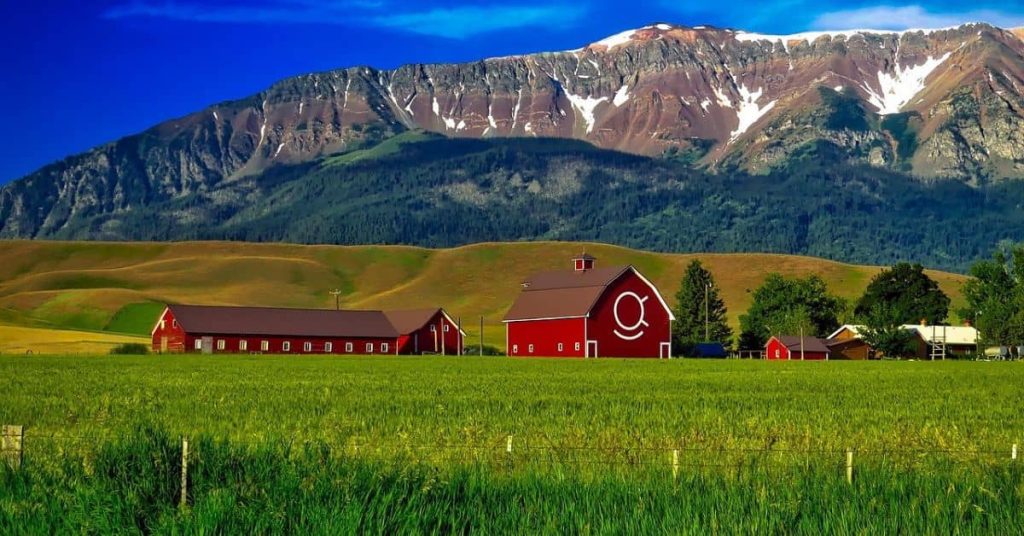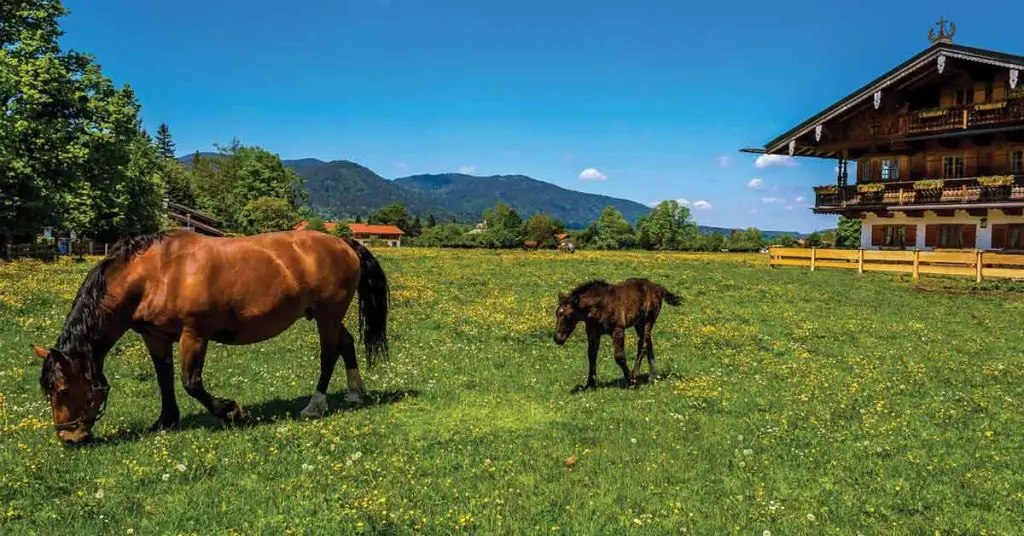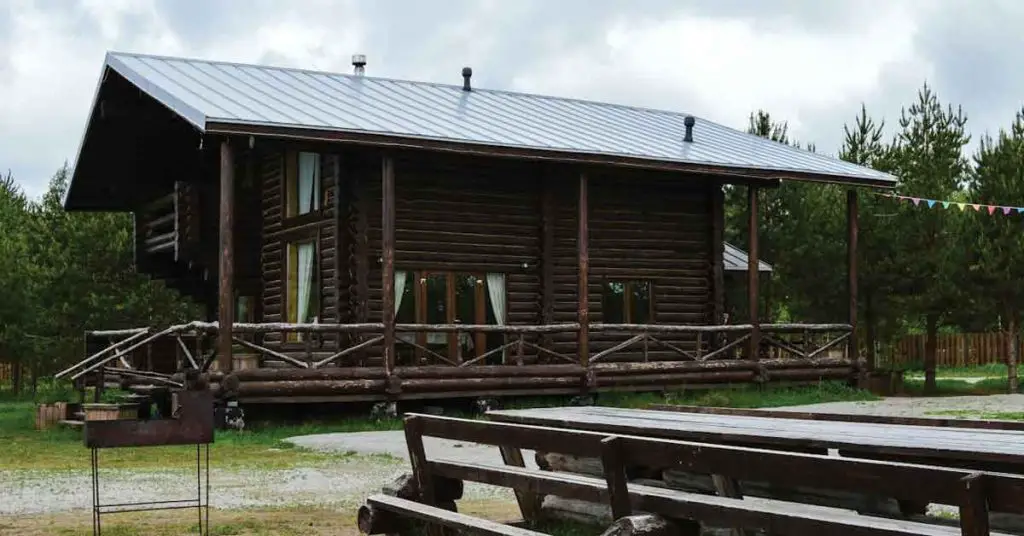Introduction to Homesteading in Oregon
If you’ve ever dreamed of living closer to nature, growing your own food, and building a life rooted in self-reliance, homesteading in Oregon might just be your perfect path. With its diverse landscapes — from misty coastal forests to fertile valleys and high desert plains — Oregon offers a little something for every type of homesteader, whether you’re a beginner or a seasoned back-to-the-lander.
In this ultimate guide, we’re going to walk you through everything you need to know about homesteading in Oregon — from understanding the legal side of things and finding the right piece of land to choosing the best crops, setting up off-grid systems, and navigating the joys and challenges of rural life. Along the way, you’ll pick up practical tips, personal insights, and expert advice to help you thrive, not just survive, in the Beaver State.
Whether you’re hoping to raise chickens, start a market garden, live off-grid, or simply live a little more intentionally, this guide is here to help you take that next confident step toward your Oregon homestead dream. Let’s dig in!
Why Oregon Is a Top Choice for Homesteading
When people imagine starting a homestead, Oregon often rises to the top of their wish list — and for good reason. Homesteading in Oregon offers a rare mix of natural beauty, fertile land, a supportive community, and progressive policies that make it one of the most homesteader-friendly states in the U.S. Let’s take a closer look at what makes Oregon such a magnet for those seeking a more self-sufficient, intentional life.
Favorable Climate, Soil, and Natural Resources
Oregon’s diverse climate zones make it possible to homestead in a way that fits your goals and lifestyle. Whether you’re drawn to the rainy, temperate coastal regions, the lush Willamette Valley, or the dry high desert of eastern Oregon, you’ll find landscapes suited to farming, gardening, and raising animals. The state’s rich volcanic soils, especially in western regions, offer excellent conditions for growing a wide range of crops, from vegetables and berries to wine grapes and nut trees.
On top of that, Oregon is home to abundant water resources, forests for firewood and timber, and wild areas for foraging and hunting. This natural wealth gives homesteaders access to everything from clean water to building materials right in their backyard.
Overview of Land Affordability and Cost of Living
While Oregon’s urban hubs like Portland have seen sharp rises in housing costs, many rural areas remain surprisingly affordable, making homesteading in Oregon accessible to a wide range of people. Counties in eastern and southern Oregon often offer land at prices well below national averages — sometimes under $3,000 per acre — with the added benefit of low property taxes in some regions.
Cost of living can vary, but many homesteaders offset expenses by producing their own food, using alternative energy, or generating extra income through farm stays and farmers’ markets. In short, if you’re resourceful and flexible, Oregon offers an attractive balance between affordability and opportunity.
Benefits of Oregon’s Homestead Exemption
Oregon’s homestead exemption can be a game changer for small landowners and families. This legal provision protects a portion of your home’s value from creditors in case of financial hardship — up to $40,000 for individuals and $50,000 for couples (as of current state law).
This safety net provides peace of mind, especially for those investing in land, building materials, and equipment to get their homestead off the ground. Make sure to check the latest exemption amounts and requirements, as they can change over time.
Opportunities for Women and Minority Homesteaders in Oregon
Oregon has become a leader in supporting women, BIPOC (Black, Indigenous, People of Color), and minority farmers through targeted grants, loans, and training programs. Organizations like Oregon Tilth and the National Young Farmers Coalition offer resources specifically for historically underserved groups, creating pathways to land access, mentorship, and farm business development.
If you’re part of one of these communities, you’ll find support networks and funding opportunities that can help make your homesteading dream a reality.
Strong Local Food Systems and Farm-to-Table Movements
One of the most exciting things about homesteading in Oregon is its deeply rooted local food culture. The state is home to bustling farmers’ markets, vibrant CSA (Community Supported Agriculture) programs, and thriving farm-to-table restaurants that prioritize local produce and meats.
For homesteaders, this means not only a chance to feed your family well but also the opportunity to turn your surplus into income or bartering power within your community. Whether you’re selling heirloom tomatoes, pastured eggs, or handmade soaps, Oregon’s food-conscious culture is a supportive environment for small-scale producers.
Personal tip: Before you make your move, spend some time visiting different regions of Oregon — from the coast to the Cascades to the high desert. Talk to local farmers, walk the land, and get a feel for the rhythms of each area. You’ll be surprised how much it shapes your homesteading plans and priorities.
Understanding Oregon Homesteading Laws

If you’re drawn to homesteading in Oregon, understanding the legal landscape is just as important as knowing what crops to plant or which livestock to raise. Oregon’s homesteading laws touch on everything from property protections and zoning rules to off-grid living and water use. Taking the time to get familiar with these legal aspects can save you a lot of frustration—and potentially a lot of money—down the road.
Oregon Homestead Act and Homestead Exemption Explained
Oregon’s Homestead Act, while not a path to “free land” as many people imagine, plays a crucial role in protecting homeowners. The Oregon Homestead Exemption shields a portion of your home’s value from creditors, offering financial security if you fall on hard times. As of recent regulations, individuals can protect up to $40,000, and couples up to $50,000 of their home’s equity.
This exemption is particularly valuable for homesteaders investing in land, buildings, and equipment, as it provides a legal cushion should unexpected debts arise. To benefit, you typically need to occupy the property as your primary residence, and the land size must fall within set acreage limits.
How Do I Claim the Oregon Homestead Exemption?
Claiming the Oregon homestead exemption is relatively straightforward, but it does require paperwork. You must file a declaration of homestead with the county recorder’s office where your property is located. This legal form formalizes your claim and puts local authorities on notice that you are seeking the exemption.
Pro tip: Double-check the current forms and filing requirements with your county or through Oregon.gov Homestead Exemption to avoid any missteps. Also, keep records of your occupancy, utility bills, or farm business activities to back up your claim if needed.
The Status of Traditional Homesteading in Oregon Today
While the romantic image of “staking a claim” on free government land is part of America’s past, homesteading in Oregon today focuses more on sustainable living, small-scale farming, and self-reliance. There’s no formal homestead land giveaway, but many counties offer affordable rural properties, tax-delinquent land sales, or even underused BLM (Bureau of Land Management) leases that can be adapted for homesteading.
Exploring these modern pathways requires research, but local real estate agents, county land offices, and rural development programs can be great starting points.
Is Off-Grid Living Legal in Oregon?
The good news is, yes—off-grid living is legal in Oregon, but it’s governed by local building codes, zoning ordinances, and state health and safety laws. Going fully off-grid with solar panels, rainwater collection, composting toilets, and alternative housing like yurts or tiny homes is possible, but you’ll need to meet specific health, sanitation, and permitting requirements.
In some counties, you may need a permit even to disconnect from the power grid, so always check local regulations before starting your build.
Permits, Zoning Regulations, and Water Rights
Homesteaders in Oregon need to navigate a patchwork of zoning laws and water-use regulations, especially in rural areas.
Oregon Zoning Laws for Tiny Homes and Cabins
Oregon is known for being fairly progressive when it comes to alternative housing, but it’s not a free-for-all. Some counties allow tiny homes as permanent residences, while others restrict them to accessory dwelling units (ADUs) or RV parks. Cabins and off-grid shelters also require adherence to building codes, including septic, water, and electrical standards.
Before you build, consult with your county’s planning department to understand the specific zoning rules for your property.
Rainwater Harvesting Laws in Oregon
Good news for sustainability-minded homesteaders: rainwater harvesting is legal in Oregon, and in many areas, it’s encouraged. Oregon law allows you to collect rainwater from rooftops for non-potable uses like irrigation without a water rights permit. However, using surface water, streams, or rivers requires a formal water right from the Oregon Water Resources Department.
If you’re setting up large-scale water systems, it’s wise to review local restrictions and best practices to avoid running into compliance issues.
Personal insight: Many Oregon homesteaders find success by developing strong relationships with local planning offices and neighbors early on. Being proactive and transparent often leads to smoother permitting processes and fewer headaches down the road.
Finding and Buying Land in Oregon

For anyone dreaming of homesteading in Oregon, one of the most exciting—and sometimes overwhelming—steps is finding the right piece of land. Oregon offers a diverse landscape, from coastal rainforests to high desert plains, so understanding where to put down roots is crucial for both success and satisfaction. This section will walk you through the top regions, what to look for in available properties, and the realities of land costs, all with a practical and encouraging approach.
Best Counties and Regions for Homesteading
Oregon is incredibly diverse, and the best place to homestead will depend on your goals and lifestyle.
- Willamette Valley (Marion, Lane, Polk Counties): Fertile soils, mild climate, and strong local markets make this area a favorite for market gardeners and small farmers.
- Southern Oregon (Josephine, Jackson Counties): Known for longer growing seasons, more sun, and a welcoming homesteading community.
- Eastern Oregon (Harney, Baker Counties): Affordable land and wide-open spaces—but harsher winters and water access challenges.
- Central Oregon (Deschutes, Crook Counties): A growing off-grid movement, with great solar potential but less water availability.
Visiting regions in person and connecting with local homesteaders can help you gauge what feels like the right fit.
Homesteading Land for Sale vs. Free Land Opportunities
While “free land” often sounds too good to be true, there are sometimes programs in rural Oregon offering low-cost lots to attract residents or revive small communities. Keep an eye on:
- Tax-delinquent property auctions at county offices
- Rural development programs in small towns looking to grow
- Private sales of affordable rural parcels, often found through local realtors or homesteading groups
However, most newcomers will buy land through the regular market. Look for listings that mention agricultural zoning, existing wells or water rights, and road access, as these features are critical for homesteading success.
Evaluating Abandoned Homesteads and Restoration Potential
Abandoned or neglected properties can be a treasure trove—or a money pit. When evaluating:
- Check the condition of existing structures (roofs, wells, septic, barns).
- Investigate any liens, back taxes, or legal disputes attached to the property.
- Walk the land yourself, looking for signs of water availability, soil health, and invasive weeds.
Some Oregon counties have programs to help rehabilitate old homesteads, so ask local officials about grants or partnerships that might offset renovation costs.
Understanding Oregon Land Prices for Homesteading
Oregon’s land prices vary dramatically:
- Willamette Valley and near cities → $10,000–$30,000+ per acre
- Southern Oregon and coastal areas → $5,000–$15,000 per acre
- Eastern Oregon and high desert regions → $1,000–$5,000 per acre
Keep in mind, price isn’t everything. A cheap parcel without water rights or road access may cost you more in the long run than a moderately priced, well-situated piece of land. Work with local realtors who understand homesteading needs, and don’t be afraid to negotiate.
Homesteading on Public Lands and BLM Leases
Though you can’t “homestead” on public lands in the old-fashioned sense, the Bureau of Land Management (BLM) offers grazing leases, timber contracts, and recreational permits that can complement private land homesteading. Some Oregon homesteaders lease nearby BLM lands for seasonal grazing or firewood cutting, reducing pressure on their own properties.
Pro tip: Visit the local BLM field office to learn about available programs, fees, and requirements. Building a respectful relationship with land managers can open doors to long-term, sustainable resource use.
Personal insight: Many successful Oregon homesteaders emphasize patience. Finding the “perfect” land may take months or even years, but being clear on your goals and doing your homework upfront will save you heartbreak—and dollars—later.
Building a Productive Oregon Homestead

Once you’ve secured your land, the real adventure of homesteading in Oregon begins—transforming it into a productive, sustainable homestead. Whether you’re dreaming of fresh garden harvests, raising your own animals, or managing your woods with care, Oregon’s diverse climate and resources offer plenty of opportunity. Let’s explore how to make the most of your land with practical, region-smart strategies.
Best Crops for Oregon’s Climate
Oregon’s climate zones vary widely, but with careful crop selection, you can enjoy a bountiful harvest almost anywhere.
Vegetables, Fruits, and Perennials
- Vegetables: Cool-season crops like kale, spinach, peas, and carrots thrive in western Oregon’s mild climate, while heat-lovers like tomatoes, peppers, and melons do well in southern and eastern parts.
- Fruits: Apples, pears, plums, and cherries flourish across the state. In the Willamette Valley, blueberries and raspberries are homesteader favorites.
- Perennials: Asparagus, rhubarb, and artichokes offer long-term harvests with minimal annual planting effort.
Tip: Pay attention to your USDA Plant Hardiness Zone and use Oregon State University’s Extension planting guides to time your planting and harvesting right.
Recommended Livestock for Beginners
Raising livestock can feel intimidating at first, but starting small allows you to build skills and confidence over time.
Chickens, Goats, and Sheep
- Chickens are a perfect gateway animal, providing eggs, meat, and natural pest control.
- Goats are hardy, versatile, and excellent for clearing brush; plus, they offer milk and meat.
- Sheep are well-suited to Oregon’s grassy pastures and provide meat, wool, and even milk.
Tip from seasoned homesteaders: Start with one or two species, learn their needs thoroughly, and expand your flock or herd as you gain experience.
Forest and Woodlot Management
If your property includes a forested area, you’re holding a valuable resource for firewood, lumber, and wildlife habitat.
Wildlife Habitat Considerations
Practicing selective thinning, maintaining native plant diversity, and creating brush piles or leaving snags (standing dead trees) can help balance human use with supporting local wildlife. Not only does this benefit deer, birds, and pollinators, but it also builds resilience against pests and disease.
A walk through your woods each season to observe changes and plan small interventions will go a long way toward maintaining a healthy ecosystem.
Emerging Trends: Regenerative Agriculture
More Oregon homesteaders are adopting regenerative agriculture—a set of practices that restore soil health, increase biodiversity, and sequester carbon.
- Use cover crops to keep soil protected year-round.
- Practice rotational grazing with animals to mimic natural patterns.
- Avoid tilling whenever possible to maintain soil structure and microbial life.
Regenerative methods not only increase long-term productivity but also build resilience to Oregon’s changing climate patterns.
Personal insight: Many Oregon homesteaders I’ve spoken with recommend starting with a “small but mighty” mindset. Focus on getting a few things right—whether that’s a kitchen garden, a small chicken coop, or a permaculture orchard—before expanding into more complex projects. You’ll enjoy more success, less stress, and a stronger connection to your land.
Off-Grid Living and Energy Options

For many drawn to homesteading in Oregon, the dream goes beyond just growing food—it’s about living independently from public utilities and creating a truly self-reliant lifestyle. Whether you want to reduce your carbon footprint, lower utility bills, or prepare for emergencies, Oregon’s mix of sun, wind, and water offers fantastic opportunities to go off-grid.
Solar, Wind, and Hydropower Systems
Oregon’s diverse geography means you can choose the renewable energy system that best fits your land.
- Solar: In central and eastern Oregon, where there’s plenty of sunshine, solar panels can cover most, if not all, of a homestead’s electricity needs. Net metering programs can even let you sell excess power back to the grid.
- Wind: Coastal and high-elevation areas often see steady wind patterns, making small-scale wind turbines a smart addition, especially when paired with solar for cloudy days.
- Hydropower: If your property includes a flowing creek or river, micro-hydro turbines can generate consistent energy day and night, offering one of the most reliable off-grid sources.
Pro tip from Oregon homesteaders: Combining two or more systems (like solar + wind) provides a backup during seasonal weather shifts.
Renewable Energy Grants and Tax Credits
One of the best-kept secrets in homesteading in Oregon is how many financial incentives are available to help offset the cost of renewable energy installations.
- Federal incentives: The federal solar tax credit (ITC) offers up to 30% back on eligible systems, including solar, wind, and battery storage.
- State and local programs: Oregon offers additional rebates, low-interest loans, and grants for renewable energy through agencies like the Oregon Department of Energy.
- USDA Rural Energy Programs: If you’re running a small farm or agricultural business, you may qualify for USDA grants or loans to help install renewable systems.
Off-Grid Internet, Communication, and Remote Work
Just because you’re off-grid doesn’t mean you have to be disconnected.
- Internet options: Satellite internet, cellular hotspots, and emerging technologies like Starlink make it possible to work remotely or stay in touch with family—even in the mountains.
- Communication tools: Two-way radios, GMRS systems, and emergency satellite messengers keep you connected when cell service drops.
- Remote work opportunities: Many Oregon homesteaders supplement their income with remote jobs, online businesses, or digital side hustles, blending modern tech with a traditional lifestyle.
Tools, Apps, and Smart Tech for Modern Homesteaders
Today’s homesteaders are blending old-school skills with cutting-edge tools.
- Monitoring systems: Use smart meters to track your energy use, weather apps to plan your planting, or water sensors to manage irrigation.
- Automation: Solar-powered automatic gates, chicken coop doors, or garden irrigation systems save time and make life easier.
- Resource management apps: From crop planning to livestock health records, many apps can help you stay organized and efficient.
Personal tip: Start small and upgrade gradually—there’s no need to techify everything overnight. The best setups are customized to your lifestyle and goals.
Practical Skills and Daily Life

Life on a homestead isn’t just about growing food or raising animals—it’s about building a lifestyle centered on resilience, creativity, and family connection. Homesteading in Oregon offers a unique opportunity to blend traditional skills with modern tools, creating a rich and fulfilling daily rhythm. Let’s look at some of the key areas where your practical know-how will make all the difference.
Homeschooling and Family Life
For many Oregon homesteaders, homeschooling becomes a natural extension of self-sufficiency. It’s not just about academics—it’s about teaching kids practical life skills, responsibility, and a deep connection to nature.
- Nature-based learning: Oregon’s forests, rivers, and coastline become your classroom. Children can learn biology through gardening, geology on hiking trips, and math through building projects.
- Community connections: Oregon has an active homeschooling network, with co-ops, 4-H clubs, and extension programs offering everything from art classes to livestock care.
- Balancing work and family: Homesteading can demand long hours, so setting realistic schedules and involving kids in age-appropriate tasks—like collecting eggs or helping in the garden—keeps family life woven into the homestead routine.
Food Preservation: Canning, Drying, Freezing
With Oregon’s abundant harvests, preserving food is essential for year-round self-reliance.
- Canning: Pressure canning and water bath canning help preserve vegetables, fruits, jams, and sauces. Be sure to follow tested recipes, especially for low-acid foods like green beans, to ensure safety.
- Drying: Dehydrating herbs, fruits, and even meat (jerky!) is a low-energy, high-reward preservation method that works especially well in Oregon’s dry summer months.
- Freezing: While not “off-grid,” freezers are practical for preserving bulk harvests like berries, corn, and meat. Consider investing in a backup power source if you live in a rural area prone to outages.
Personal tip: Many Oregon homesteaders keep a seasonal preservation calendar to avoid getting overwhelmed during harvest time.
DIY Projects, Repairs, and Self-Sufficiency Skills
Part of the homesteading mindset is embracing the role of lifelong learner and problem solver.
- Carpentry and repairs: Knowing how to fix fences, patch a roof, or build a chicken coop saves money and builds confidence.
- Basic plumbing and electrical: Simple skills like repairing a leaky faucet or replacing a light switch can keep a homestead running smoothly, especially in remote areas where help may be far away.
- Crafts and handmade goods: From soap making and candle pouring to wool spinning or woodworking, these traditional crafts not only support self-sufficiency but can also become sources of extra income.
Insight from Oregon homesteaders: Start with one DIY project at a time—success builds motivation, and small wins help you build a toolkit of skills without burning out.
Managing Challenges on an Oregon Homestead

Life on a homestead may be rewarding, but it’s rarely without obstacles. Homesteading in Oregon brings unique challenges, from unpredictable weather to wildlife encounters and the mental demands of rural living. Understanding these hurdles ahead of time helps you build resilience, both on your land and within yourself.
Wildlife and Pest Management
Oregon’s lush landscapes come with plenty of wild visitors—deer, elk, bears, raccoons, and even cougars in some regions. And then there are the smaller intruders: gophers, voles, aphids, and slugs that can decimate gardens overnight.
- Fencing and barriers: Install deer fencing around gardens, electric fencing for livestock, and rodent-proof foundations for outbuildings.
- Natural deterrents: Plant deer-resistant shrubs, use motion-activated lights or sprinklers, and introduce beneficial insects like ladybugs to control pests.
Personal insight: Many Oregon homesteaders recommend balancing wildlife respect with firm boundaries—coexistence is possible, but it takes planning.
Preparing for Oregon’s Extreme Weather (Snow, Heavy Rain, Drought)
Oregon’s weather can swing from mild coastal rains to high desert droughts or mountain snowstorms.
- Snow: Keep a backup generator, snow chains, and extra feed on hand if you live in eastern or mountainous regions.
- Rain: Ensure good drainage around buildings and invest in rainwater catchment to turn heavy rains into a resource.
- Drought: Use mulch, shade cloth, and drought-tolerant plant varieties, and prioritize water-saving irrigation systems like drip lines.
Comprehensive Wildfire Preparedness and Mitigation
As summers get hotter and drier, wildfires have become a real threat across Oregon.
Understanding Wildfire Risk and Local Regulations
Check your county’s wildfire risk maps and stay up-to-date on burn bans or fire season restrictions. Oregon’s Department of Forestry and local fire districts provide resources specific to your region.
Creating Defensible Space and Fire-Resistant Landscaping
- Clear brush and deadwood within 30–100 feet of buildings.
- Choose fire-resistant plants near your home.
- Use non-flammable materials for decks, fences, and roofing.
Emergency Planning and Evacuation Procedures
- Have a “go bag” ready with essentials.
- Create an evacuation plan that includes animals.
- Sign up for local alert systems to stay informed.
Navigating Supply Shortages and Rural Access
Living far from town means you’ll need to plan ahead.
- Stockpile essentials like feed, pantry staples, hardware supplies, and medications.
- Build relationships with neighbors to trade or share resources.
- Join local co-ops or buying clubs to access bulk goods at better prices.
Coping With Isolation and Burnout
Homesteading offers freedom, but it can also feel lonely or overwhelming.
- Stay socially connected: Join local groups, online forums, or participate in farmers’ markets.
- Set realistic goals: Avoid burnout by pacing projects and allowing for downtime.
- Prioritize mental health: Take time off the farm, explore hobbies, and ask for help when needed.
Designing for Sustainability

Sustainability isn’t just a buzzword—it’s at the heart of successful homesteading in Oregon. With diverse landscapes and changing climate patterns, Oregon homesteaders are in a unique position to shape land use in ways that support long-term productivity, resilience, and environmental stewardship. Here’s how to design a homestead that works in harmony with nature and your values.
Integrating Permaculture Principles
Permaculture is all about creating systems that mimic nature’s own patterns—making your homestead more productive and less reliant on outside inputs.
- Observation first: Walk your land, notice sun and wind patterns, slope, water flow, and microclimates before putting in major systems.
- Layered planting: Combine trees, shrubs, perennials, and annuals in a way that maximizes space, improves soil health, and increases biodiversity.
- Waste becomes resource: Compost kitchen scraps, animal bedding, and garden waste; use greywater systems for irrigation; and think of everything as part of a cycle.
Personal tip: Many Oregon homesteaders suggest starting small—try one permaculture-inspired bed or food forest section before redesigning the whole property.
Sustainable Water Management and Drought-Resistant Practices
Water is precious in Oregon, especially with longer summer droughts and regional water restrictions.
- Rainwater harvesting: Collect rain from rooftops into cisterns or barrels (check local regulations).
- Drip irrigation and mulching: Reduce evaporation and deliver water right where it’s needed.
- Drought-tolerant crops: Choose varieties adapted to your region, such as dry-farmed tomatoes in the Willamette Valley or native berries in eastern Oregon.
- Swales and berms: Use contour landscaping to slow, spread, and sink water into the soil.
Local insight: Oregon Extension Service often offers workshops on dryland farming and water-saving techniques—worth checking out!
Organic Farming Certifications in Oregon
If you plan to sell produce or products from your homestead, an organic certification can boost your market appeal and support sustainable practices.
- Know the requirements: In Oregon, organic certification is overseen by the Oregon Department of Agriculture (ODA) or accredited USDA certifiers. You’ll need to manage soil fertility, pest control, and weeds using approved organic methods.
- Keep detailed records: Track all inputs, crop rotations, and harvests.
- Transition period: Typically, you need three years of organic-compliant practices before you can be certified.
Pro tip: Even if you don’t get certified, adopting organic practices helps build healthier soils, reduce chemical use, and protect pollinators.
Legal Considerations for Selling Products
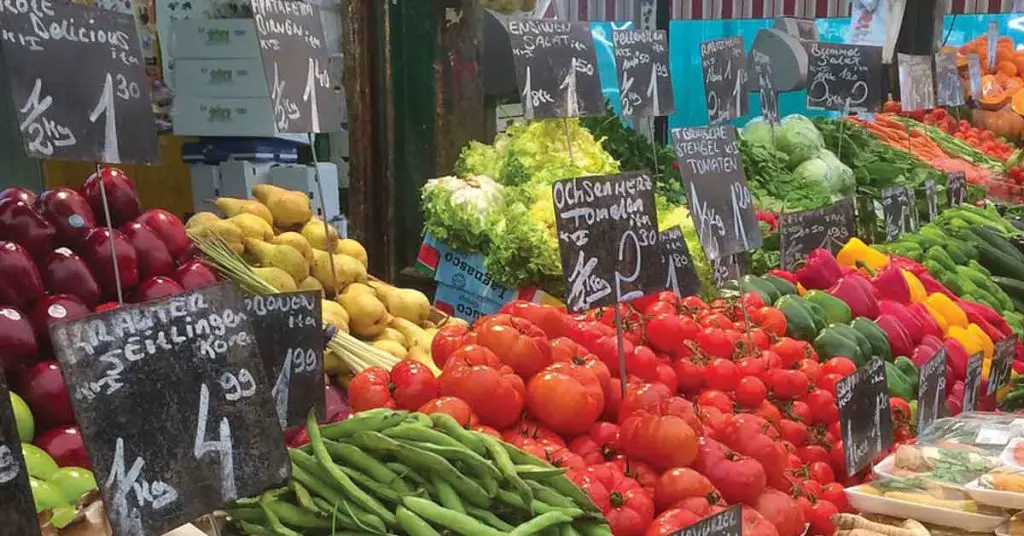
One of the most rewarding parts of homesteading in Oregon is turning the fruits of your labor into extra income—but before you set up a farmstand or start selling online, it’s crucial to understand the legal side. Oregon has specific rules designed to protect consumers while giving small-scale producers room to thrive. Here’s what you need to know to get started confidently.
Oregon Cottage Food Laws
Oregon’s cottage food laws allow homesteaders to sell certain homemade, low-risk foods without needing a full commercial kitchen license.
- What you can sell: Baked goods (without cream fillings), jams, jellies, fruit pies, and some pickled products fall under cottage food allowances. Anything with meat, dairy, or requiring refrigeration is generally off-limits.
- Licensing and permits: While Oregon’s program is fairly friendly, you must still register with the Oregon Department of Agriculture (ODA) and pay a small annual fee. Keep in mind that there are limits on annual sales amounts under these rules.
- Labeling requirements: Your packaging must clearly state the producer’s name, address, product name, and a statement like “This product is homemade and not subject to state inspection.”
Personal tip: Many Oregon homesteaders recommend starting small—test products at local events or among neighbors before scaling up, which can help you iron out recipes and packaging.
Selling at Farmers’ Markets and Online Platforms
Farmers’ markets and online shops offer great opportunities for Oregon homesteaders to build a customer base beyond their immediate community.
- Farmers’ markets: Check market-specific rules, which may include vendor fees, insurance, and product approval. You may also need a temporary restaurant license if you’re selling prepared foods like hot soups or fresh-pressed cider.
- Online platforms: Platforms like Etsy, Facebook Marketplace, or even your own website can help you sell dried herbs, handmade crafts, seeds, or non-perishable foods. Remember to research state and federal shipping regulations, especially for plants, seeds, or food items.
- Taxes and reporting: Even small homestead businesses need to track income for state and federal taxes. Oregon has no general sales tax, but income from homestead sales must be reported.
Local insight: Joining your local farmers’ market association or small business support network can provide guidance on compliance, marketing, and even access to shared commercial kitchen spaces if you want to expand.
Generating Extra Income From Your Homestead

One of the most exciting aspects of homesteading in Oregon is the chance to turn your land and skills into a meaningful income stream. Beyond selling vegetables or eggs, many Oregon homesteaders are embracing creative ways to diversify their income, connect with the community, and support their sustainable lifestyle. Here’s a look at some of the most promising income-generating paths.
Agritourism and Hosting Farm Stays
Oregon’s natural beauty and farm-to-table culture make it a fantastic place to dive into agritourism.
- Farm stays: Whether it’s rustic cabins, glamping tents, or cozy guest rooms in your farmhouse, offering overnight stays gives visitors a chance to experience rural life up close. Many travelers are eager to unplug, milk goats, gather eggs, or help in the garden.
- Farm experiences: Guided tours, u-pick fruit events, harvest dinners, and seasonal activities (like pumpkin patches or Christmas tree cutting) are a hit with families.
- Regulations: Check local zoning rules and lodging tax requirements before launching. Platforms like Airbnb and Hipcamp can help market your farm stay to a wide audience.
Personal tip: Start small with seasonal or weekend stays, then expand as you gain experience and confidence.
Workshops, Tours, and Online Courses
Sharing your skills is not only rewarding but also a smart income stream.
- On-site workshops: Offer hands-on classes in cheese-making, herbal medicine, gardening, woodworking, or animal care. Oregon’s community-minded culture is ideal for this.
- Farm tours: Guided tours tailored to kids, tourists, or school groups are educational and fun. They can also help build loyal customers for your farm goods.
- Online courses: If you’ve mastered a homesteading skill, consider recording a course or running live webinars. Topics like canning, permaculture design, or off-grid living draw audiences well beyond Oregon.
Pro insight: Collaborate with local extension offices or food co-ops—they often promote local classes and workshops.
Outdoor Tourism and Eco-Friendly Retreats
Oregon’s reputation as an outdoor and eco-travel destination creates a unique opportunity for homesteaders.
- Eco-retreats: Offer wellness retreats focused on nature connection, organic food, or sustainable living. Think yoga in the orchard, meditation by the creek, or permaculture weekends.
- Outdoor adventures: If your property has access to rivers, forests, or trails, consider guided nature walks, birdwatching tours, or even pack-animal treks.
- Marketing and partnerships: Connect with Oregon tourism networks or regional visitor centers to spread the word, and highlight your eco-credentials—many travelers are actively seeking low-impact stays.
Personal tip: Focus on authenticity. Visitors are drawn to homesteads because they want a real experience, not a polished resort.
Community Connections and Support

One of the most rewarding parts of homesteading in Oregon is discovering the strong, supportive network of like-minded people across the state. Whether you’re a first-year gardener or a seasoned off-grid homesteader, tapping into local and online communities can transform your journey—offering encouragement, practical advice, and even friendship.
Finding Local Gardening and Homesteading Groups
Oregon is home to a wide range of gardening clubs, permaculture meetups, and homesteading circles.
- Local groups: Check out gardening clubs, 4-H, Master Gardeners, and local permaculture guilds. Many small towns have informal networks that meet regularly to share tips, swap tools, or plan events.
- Where to look: Ask at your local extension office, farm supply store, or community center.
- Why it matters: These groups are an excellent source of localized advice on things like soil conditions, pests, or what grows best in your specific microclimate.
Personal insight: Joining a local group early on can help you avoid costly mistakes and build lasting relationships.
Seed Swaps, Resource Sharing, and Co-ops
Resource sharing is woven into Oregon’s homesteading culture.
- Seed swaps: Across Oregon, local seed swaps bring growers together to exchange heirloom and organic seeds, helping preserve biodiversity while cutting costs.
- Tool libraries & co-ops: Many communities have tool-sharing libraries or farming co-ops that let you borrow larger equipment or buy feed in bulk—an eco-friendly, cost-effective solution.
- Sharing labor: Don’t underestimate the value of community barn-raisings, fence repairs, or harvest days. These collaborations make big jobs easier and more fun.
Expert tip: Keep a calendar of local swap meets and market days—you’ll save money and plug into your community.
Oregon Homesteading Trends on Social Media and YouTube
Oregon’s homesteading community is active and growing online.
- YouTube channels: Many Oregon homesteaders document their journeys on YouTube, offering everything from garden tours to DIY tutorials. Channels like these can help you troubleshoot problems and stay inspired.
- Social media groups: Facebook, Instagram, and Reddit have thriving Oregon homesteading communities where members trade tips, post gear for sale, or organize meetups.
- What’s trending: Watch for hashtags like #OregonHomestead, #PNWhomesteading, or #BackyardPermaculture to keep up with local trends.
Pro insight: While online advice can’t replace hands-on experience, it’s a great way to learn from people who understand Oregon’s unique climate and challenges.
For local educational programs and expert support, check out the Oregon State University Extension, which offers a goldmine of workshops, guides, and online resources.
Resources and Expert Tools
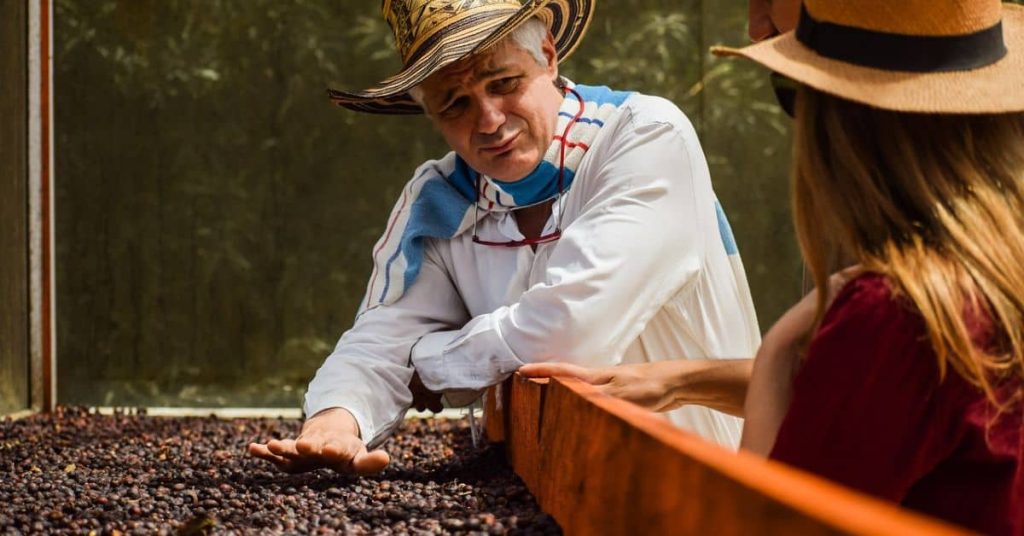
No one succeeds at homesteading in Oregon completely alone. Whether you’re troubleshooting a soil issue, navigating state regulations, or simply looking for inspiration, there’s a wealth of expert resources and tools at your fingertips. Tapping into these can save you time, money, and stress—while making your homesteading journey more rewarding.
USDA and Oregon Extension Services
The USDA and the Oregon State University Extension Service are powerhouse resources for homesteaders.
- USDA programs: From farm loans and conservation programs to crop insurance, the USDA offers both financial and technical support tailored to small farms and rural properties.
- Oregon Extension Service: This is one of Oregon’s best-kept secrets. The extension provides workshops, master gardener programs, soil testing services, pest management guides, and region-specific planting calendars. They also offer advice on livestock care, food preservation, and sustainable practices.
Personal insight: Many successful Oregon homesteaders make the extension office their first stop when tackling new projects—it’s like having a local expert on speed dial.
Online Communities, Blogs, and Recommended Reading
The digital world opens doors to invaluable learning and connection.
- Online communities: Reddit forums like r/homesteading and Facebook groups dedicated to Oregon homesteading offer real-time advice, encouragement, and even marketplace listings for tools and livestock.
- Blogs and YouTube channels: Follow Oregon-based homesteaders who share their journeys, including planting guides, DIY projects, and honest reviews of what works (and what doesn’t) in Oregon’s diverse climate.
- Recommended reading: Books like The Resilient Gardener by Carol Deppe(an Oregon author) and Gaia’s Garden on permaculture can deepen your knowledge of region-specific practices.
Expert tip: Subscribe to a few trusted blogs or YouTube channels, and focus on learning from those in your region to avoid advice that doesn’t match Oregon’s conditions.
Oregon Farm Bureau and Farmland Preservation
The Oregon Farm Bureau is a key ally for anyone working the land.
- Membership benefits: Access advocacy support, legal resources, discounts on equipment, and educational events tailored to small-scale farmers and homesteaders.
- Farmland preservation programs: Learn about Oregon’s land-use laws, conservation easements, and programs that protect farmland from development, ensuring your homestead stays productive for generations.
Pro insight: Joining organizations like the Farm Bureau not only provides practical benefits but also connects you to a larger movement of farmers and homesteaders shaping Oregon’s agricultural future.
For more, visit Oregon Farm Bureau — it’s a hub for policies, programs, and services that support Oregon’s rural communities.
Frequently Asked Questions (FAQs) About Homesteading in Oregon

When diving into homesteading in Oregon, it’s natural to have a lot of questions. Whether you’re just dreaming or already making plans, getting clear, practical answers can help you avoid common mistakes and build your confidence. Here’s a closer look at some of the questions aspiring Oregon homesteaders ask most often—along with insights from those who’ve walked the path.
Can You Still Get Free Land in Oregon?
While the days of traditional homesteading acts and free federal land are long gone, there are still occasional opportunities that pop up. Some rural counties or small towns may offer discounted land, low-cost leases, or incentives to attract new residents, especially if you’re willing to restore abandoned properties. Keep an eye on county websites, tax auctions, and land trust organizations for listings.
Personal tip: Be cautious with “too good to be true” offers. Always research zoning restrictions, access to water, and road conditions before committing to a free or ultra-cheap parcel.
How Much Land Do You Need to Homestead in Oregon?
There’s no one-size-fits-all answer here—it depends on your goals.
- For small-scale homesteading (think garden, chickens, and a couple of goats), you can get by on 1 to 5 acres.
- If you plan to raise livestock, grow crops, or manage a woodlot, you may want 10 to 40 acres or more.
- It’s often smarter to start small and scale up over time rather than take on more land (and maintenance) than you can realistically handle.
Expert insight: Focus on soil quality, water access, and sunlight exposure—these are often more critical than sheer acreage.
What Permits Are Required for Off-Grid Living?
Living off-grid in Oregon is legal, but it comes with a patchwork of permits and regulations that vary by county.
- You may need permits for septic systems, wells, solar or wind installations, and composting toilets.
- Tiny homes, cabins, and alternative structures are often regulated under local zoning and building codes.
- Rainwater harvesting is legal in Oregon, but large-scale systems may require consultation with the Oregon Water Resources Department.
Pro tip: Check with your county planning office before building or installing anything major—it can save you costly headaches later.
How Can Beginners Start Homesteading Without a Big Investment?
You don’t need to own a sprawling farm to start homesteading in Oregon. Here are smart, low-cost ways to ease in:
- Start a backyard garden or raise a few chickens if local ordinances allow.
- Learn canning, fermenting, or seed-saving—skills that pay off long-term.
- Join local co-ops, seed swaps, or community gardens to share resources and knowledge.
- Consider leasing land or partnering with existing farmers to test the waters before buying.
Personal advice: Focus on one or two projects at a time. Small wins not only build skills but also keep you motivated and financially grounded.
Starter Toolkit for Oregon Homesteaders
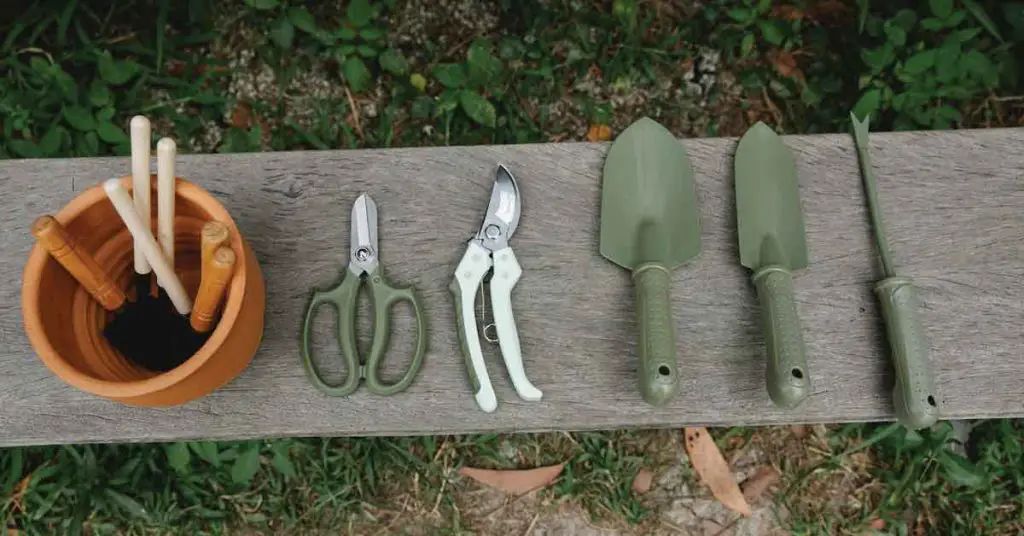
Starting your journey in homesteading in Oregon is an exciting step toward self-sufficiency, but having a thoughtful plan and the right tools can make all the difference. Here’s a practical starter toolkit to help you begin with confidence and avoid feeling overwhelmed.
Planning Checklists and Timelines
A successful homestead starts with a solid plan. Begin by outlining your priorities—whether that’s growing food, raising livestock, or living off-grid. Create a seasonal checklist to guide your year:
- Spring: Prepare soil, start seeds indoors, repair fences.
- Summer: Plant gardens, manage irrigation, harvest early crops.
- Fall: Preserve harvest, prepare livestock shelters, winterize water lines.
- Winter: Plan next season’s crops, repair equipment, attend workshops.
Set realistic timelines for big projects like installing solar panels or building a chicken coop. Don’t rush—many seasoned homesteaders recommend tackling one major goal per season to avoid burnout.
Recommended Tools and Equipment
You don’t need to break the bank to get started, but a few smart investments will make life easier on your Oregon homestead:
- For gardening: Broadfork, quality hand tools, drip irrigation kit.
- For livestock: Sturdy fencing, water troughs, predator-proof shelters.
- For general homesteading: Chainsaw, wheelbarrow, solar battery chargers, water storage barrels.
Look for secondhand tools at farm auctions, online marketplaces, or local co-ops—it’s a great way to stay on budget while building up your toolkit.
Budgeting and Financial Planning Resources
Homesteading isn’t free, but it can be affordable with careful budgeting. Start by estimating:
- Land costs (including any needed improvements).
- Equipment and livestock expenses.
- Ongoing costs like feed, seeds, water, and repairs.
Tap into local and federal resources like Oregon’s small farm extension programs, USDA loans, or renewable energy grants. Track expenses carefully with simple tools like a notebook ledger or budgeting apps, so you stay on top of spending and spot savings opportunities.
By combining a clear plan, essential tools, and smart financial prep, you can set yourself up for a smooth start in homesteading in Oregon—with more time left to enjoy the rewards of your hard work.
Recap: Your Next Steps Toward Homesteading in Oregon
Homesteading in Oregon offers an incredible opportunity to live closer to the land, build self-sufficiency, and connect with nature and community. Whether you’re drawn to the state’s fertile soils, abundant water, or resilient homesteading spirit, the journey starts with thoughtful planning, an understanding of local laws, and a willingness to adapt. From choosing the right crops and livestock to navigating Oregon’s unique regulations, every step is a chance to learn and grow.
Start Small and Grow Confidently
Remember, you don’t have to do everything at once. Many successful Oregon homesteaders recommend starting with a small garden, a few chickens, or even just improving your water conservation systems before expanding into larger projects. Celebrate small wins, give yourself grace when you hit bumps in the road, and enjoy the deep satisfaction that comes from building something meaningful over time.
Share Your Oregon Homesteading Journey with Us
We’d love to hear from you! If you’re already homesteading in Oregon or just beginning to dream about it, share your experiences, questions, and lessons learned with the community. Whether it’s through local homesteading groups, social media, or a friendly neighbor, your journey can inspire and guide others who are eager to thrive in the Beaver State.
Disclaimer: The information provided in this article is for general informational purposes only and is not intended to be a substitute for professional advice. The author of this article does not claim to be an expert in homesteading and the information provided should not be relied upon to make decisions about your own homesteading journey. Please do your own research and consult with a qualified professional before making any decisions about your homestead.
Share via:
Shaun Alexander is the main writer and editor for HomesteadingSimple.com. With a strong passion for homesteading and sustainability, Shaun has dedicated his life to learning and sharing information about a simple, fulfilling existence tied to the land. His expertise ranges from gardening and livestock management to off-grid living and DIY projects, reflecting the diverse skills necessary for a successful homesteading lifestyle. Shaun’s goal is to inspire and educate others about the possibilities of homesteading, whether in rural, suburban, or urban settings, and to provide practical advice and tips for both beginners and seasoned homesteaders. He believes in a future where more people return to their roots, embracing a life of self-sufficiency and harmony with nature.

